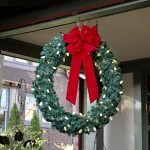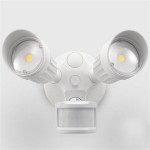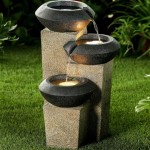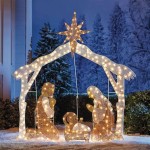```html
Outdoor Lighting Effects: Enhancing Ambiance and Functionality
Outdoor lighting transcends mere illumination; it’s a crucial element for enhancing the aesthetic appeal, security, and usability of exterior spaces. Careful planning and execution of outdoor lighting design can transform a mundane yard into an inviting oasis, improve safety around walkways, and extend the usability of outdoor areas well after sunset. Understanding the various types of lighting effects and how they can be employed is essential for achieving the desired outcome.
The selection of appropriate fixtures, light sources, and placement techniques are paramount in creating effective and visually appealing outdoor lighting. Considerations must be given to the architectural style of the property, the landscape design, intended use of the space, and surrounding environment to ensure a cohesive and harmonious result. Furthermore, energy efficiency and light pollution are vital factors that should be carefully addressed during the planning process.
Highlighting Architectural Features with Uplighting
Uplighting involves positioning light fixtures at ground level and directing the beams upwards to illuminate architectural elements such as walls, columns, and eaves. This technique can dramatically highlight textures, shapes, and details that might otherwise be lost in the darkness. Uplighting is particularly effective for showcasing unique architectural styles, such as Victorian, Georgian, or Art Deco, where intricate details are prominent.
To achieve a subtle and sophisticated effect, consider using low-wattage fixtures with narrow beam angles. This will create focused pools of light, drawing attention to specific areas and avoiding excessive light spill. For larger surfaces, wider beam angles and higher wattage fixtures may be necessary to ensure adequate illumination. Careful attention should be paid to the color temperature of the light source. Warm white light (2700K-3000K) generally complements traditional architecture, while cool white light (4000K-5000K) can accentuate modern designs.
The positioning of the fixtures is crucial for achieving the desired effect. Experiment with different angles and distances to determine the most flattering illumination. Avoid placing fixtures too close to the wall, as this can create harsh shadows and an unnatural appearance. Burying the fixtures flush with the ground can minimize their visibility during the day, maintaining a clean and uncluttered look.
Consider the impact of foliage and landscaping on the uplighting design. Trees and shrubs can partially obscure the light, creating interesting patterns and visual layers. However, overgrown vegetation can also block the light entirely, negating the effect. Regular pruning and maintenance are necessary to ensure that the uplighting remains effective and visually appealing.
Creating Ambiance with Path Lighting
Path lighting serves a dual purpose: providing safe navigation along walkways and enhancing the ambiance of the landscape. Well-placed path lights can guide visitors through the property while also creating a warm and inviting atmosphere. The key to effective path lighting is to provide sufficient illumination without being overly bright or intrusive.
A variety of path lighting fixtures are available, ranging from traditional lanterns to modern LED bollards. The choice of fixture should complement the architectural style of the property and the overall design of the landscape. Low-profile fixtures that blend seamlessly into the surroundings are often preferred, as they minimize visual clutter and allow the landscape to take center stage.
Spacing and placement are critical factors in path lighting design. The fixtures should be spaced close enough to provide continuous illumination along the walkway, but not so close that they create a runway effect. A general guideline is to space fixtures 6-8 feet apart, but this may vary depending on the brightness of the lights and the width of the path.
Consider using shielded fixtures that direct the light downwards, minimizing glare and light pollution. This is particularly important in residential areas where excessive light can disturb neighbors. Low-voltage LED path lights are an energy-efficient and environmentally friendly option that provides ample illumination without consuming excessive power. Dimmers can be incorporated to further control the light output and create a more nuanced ambiance.
Incorporate different heights and styles of path lighting to create visual interest. For example, taller bollard lights can be used to mark the entrance to a pathway, while shorter mushroom lights can be used to illuminate the path itself. The use of varying heights and styles can add depth and dimension to the landscape, creating a more visually dynamic effect.
Enhancing Security with Flood Lighting
Flood lighting is primarily intended for security purposes, providing broad illumination to deter intruders and enhance visibility around the property. However, flood lights can also be used to illuminate large areas for recreational activities or to highlight specific features of the landscape.
The key to effective security lighting is to provide sufficient illumination to identify potential threats without creating excessive glare or light pollution. Motion-activated flood lights are a popular choice, as they only activate when movement is detected, conserving energy and minimizing disturbance to neighbors. These lights should be positioned to cover vulnerable areas such as doorways, windows, and driveways.
LED flood lights are the preferred choice for security lighting due to their energy efficiency, long lifespan, and instant-on capability. They provide bright and consistent illumination without requiring a warm-up period. The color temperature of the light should be chosen carefully to avoid creating an unnatural or harsh appearance. A warm white light (2700K-3000K) is generally preferred for residential areas, as it provides a more inviting and natural look.
Consider the impact of flood lighting on surrounding properties and the environment. Excessive light can create light pollution, disrupting nocturnal wildlife and disturbing neighbors. Shielded fixtures that direct the light downwards can minimize glare and light trespass. Aim the lights carefully to avoid illuminating neighboring properties or the night sky.
Integrate flood lighting with other security measures, such as security cameras and alarm systems, to create a comprehensive security system. Motion-activated flood lights can deter intruders and provide valuable evidence for law enforcement. Regular maintenance of the flood lights is essential to ensure that they are functioning properly and providing adequate illumination. Check the fixtures periodically for damage or wear and replace bulbs as needed.
The strategic use of outdoor lighting can significantly enhance the quality of life and the value of a property. By understanding the various types of lighting effects and considering the specific needs and preferences of the homeowner, it’s possible to create an outdoor lighting design that is both functional and aesthetically pleasing. Careful planning and execution are essential for achieving a successful outcome that enhances the beauty, safety, and usability of the outdoor space.
Properly implemented outdoor lighting can transform a property into an inviting and secure environment, extending the usability of outdoor spaces well into the evening. The considerations above offer guidelines for developing comprehensive and aesthetically pleasing lighting designs.
```
Landscape Lighting Effects 8 Dramatic Outdoor Ideas You Must Try In Your Garden

Landscape Lighting Design Overview

How To Create Outdoor Lighting Effects 1000bulbs Blog

Landscape Lighting Effects Techniques Landscaping Network

Outdoor Landscape Lighting Effects Garden Design

Outdoor Landscape Lighting Ideas

Landscape Lighting Effects 8 Dramatic Outdoor Ideas You Must Try In Your Garden

5 Summer Outdoor Lighting Ideas You Ll Love

Lighting Effects Diy Garden Lights

5 Outdoor Lighting Upgrades For Your Backyard R I Lampus
Related Posts







